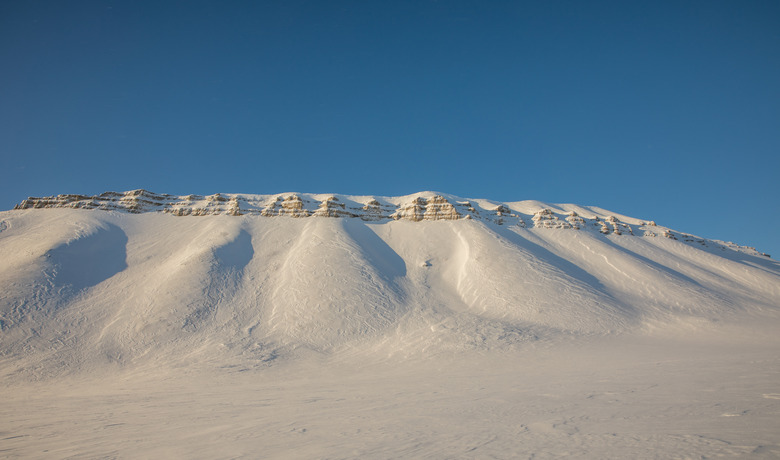Description Of Tundra
Mention of the tundra prompts images of animals like the polar bear and vast, barren landscapes. While these images are true, a great deal more encompasses the tundra.
The area is filled with tundra plants and animals found nowhere else on the planet, despite being one of the harshest environments.
Tundra Definition
Tundra Definition
Tundra is one of the five major types of biomes on Earth. These five main biomes are:
1. Forest 2. Desert 3. Aquatic 4. Grassland 5. Tundra
Tundras are the coldest of all of these biomes and include both Arctic and Alpine tundra biomes, which will be discussed in more detail later. The tundra definition depends on both the type of tundra you're discussing, the geographical location, the tundra climate and the vegetation of the region.
In terms of vegetation and climate, tundras are defined by their lack of trees, extremely cold tundra climate, a permafrost layer and mostly low-growing plants like shrubs, mosses, lichens and grasses.
The word "tundra" comes from the word "tunturi", which is a Finnish word references mountains in an area now known as tundra.
Types of Tundra
Types of Tundra
There are two main types of tundra: the **arctic tundra** and the **alpine tundra**.
The arctic tundra is by far the largest in terms of land area. Circling the North Pole and extending over all land down to the northern limits of the tree line, the arctic tundra is made up of flat expanses of low-growing plants. With a short period (usually about 50 to 60 days) of temperatures above the freezing point, only a very brief growing season is possible in the arctic tundra.
Alpine tundras exist on tall mountains, above the level where trees can grow. The altitude of this type of tundra is determined by the surrounding environment, but the features of low grasses and flowering plants are similar for all alpine tundras.
Average temperatures in both tundra climates is 10-20 degrees Fahrenheit with temperatures dropping as low as -50 degrees Fahrenheit in the winter.
Geography
Geography
The arctic tundra exists only in the northern regions of the Earth, mostly north of the Arctic Circle. Arctic tundra is found in Canada, northern Alaska and the Siberian regions of Russia. The tundra is south of the area permanently covered by ice and north of the regions in which trees can grow.
Alpine tundras exist throughout the world, wherever there are mountains tall enough that trees cannot grow at higher elevations.
Identification
Identification
The tundra is first identified by its extremely cold temperatures. The landscapes of the tundra are shaped by frost, and the temperatures remain low throughout the year. Due to the harshness of the environment, there are no trees and little diversity of plant life.
Soils are poor in the tundra and growing seasons are short. The natural population of the tundra varies drastically throughout the year.
Features of the Tundra
Features of the Tundra
Despite the cold and harsh environment, this biome still contains tundra plants and animals that can thrive. Land animals of the tundra include:
- Arctic fox
- Caribou
- Musk ox
- Lemming
- Polar bear
Among the many birds of the tundra are the gyrfalcon, rock ptarmigan, snowy owl and tundra swan.
Tundra plants tend to be hardy and stunted in height. Many of the plants grow between rocks, where they have some shelter from the elements; dark red leaves of the plants absorb as much sunlight as possible. Several types of grasses, lichens and flowering cushion plants live on the tundra.
Considerations
Considerations
Tundra life is also extremely susceptible to outside disturbance. Any destruction of ground cover results in the melting of the permafrost layer beneath the surface.
Without the permafrost, the ground can collapse. Due to the short growing season, plant life in the tundra cannot easily rebound from any destruction. Degradation, therefore, lasts for years.
Cite This Article
MLA
Brown, Laurel. "Description Of Tundra" sciencing.com, https://www.sciencing.com/description-tundra-5514749/. 22 November 2019.
APA
Brown, Laurel. (2019, November 22). Description Of Tundra. sciencing.com. Retrieved from https://www.sciencing.com/description-tundra-5514749/
Chicago
Brown, Laurel. Description Of Tundra last modified August 30, 2022. https://www.sciencing.com/description-tundra-5514749/
